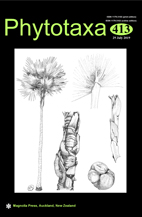Abstract
Conioscypha is an asexual morph genus placed in the family Conioscyphaceae. During our study of brown-spored hyphomycetes, a new taxon C. tenebrosa was found on decaying wood collected in Guizhou Province, China. The new species is characterized by having micronematous, hyaline conidiophores which are often reduced to conidiogenous cells, with a cup-shaped, percurrently developed, multi-collaretted phialide, and globose to subglobose, obovoid conidia with broadly rounded apex and subtruncate base. The phylogenetic analysis of combined LSU, SSU, ITS and RPB2 sequence data showed that isolates of C. tenebrosa are phylogenetically distinct from other species. Conioscypha tenebrosa sp. nov. is therefore introduced here with a description and morphological illustration. Taxonomic notes and a morphological comparison of Conioscypha species are provided.

